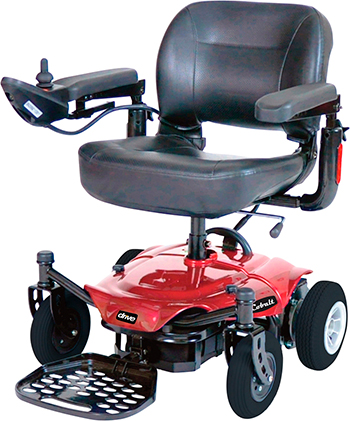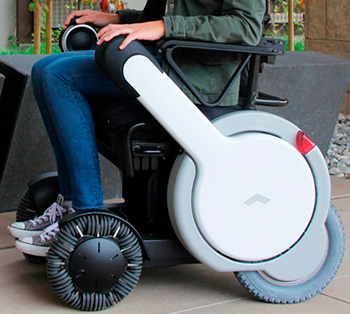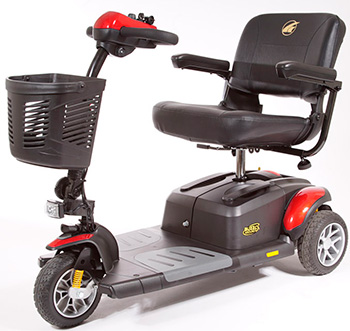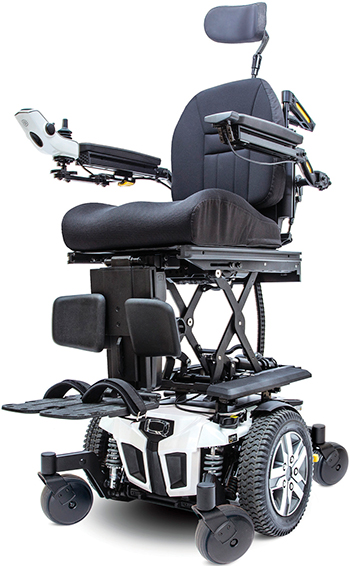 Cobalt portable power wheelchair
Cobalt portable power wheelchairDrive Devilbiss Healthcare
Mike Serhan, Executive Partner
drivemedical.com
Tell us about what your company offers the market.
SERHAN: Drive’s Power Mobility Division offers a complete portfolio of mid-, front- and rear-wheel configurations, including workhorse products such as our Trident series of power wheelchairs that include heavy-duty units and portable units.
What changes are happening this year in the power wheelchair industry?
SERHAN: One technology we are examining closely is using Bluetooth electronics on our powerchairs. It would allow the customization of each unit based upon the patient’s need for access within the home.
Do you see any challenges coming for the market in the rest of 2016?
SERHAN: The Competitive Bidding Round 2 Recompete takes effect July 1. Through many programs offered at Drive DeVilbiss, we help ensure our provider community is prepared. Our resources are tailored to help select product that provides a competitive advantage, implement programs to acquire customers, increase your top and bottom lines with up-caring programs, increase cash/retail sales and optimize cash flow.
How do your products help HME providers meet challenges?
SERHAN: We provide additional layers of support for the HME community with programs such as AuditGuard and Peace of Mind (POM). AuditGuard assists in ensuring paperwork is correct to file a successful claim and POM is an added service program to help coordinate repairs during the warranty period of the product.
 WHILL Model M
WHILL Model MWHILL
Jeff Yoshioka, Inside Sales and Marketing Manager
whill.us
How do WHILL’s products stand out in the power wheelchair industry?
YOSHIOKA: WHILL received FDA clearance on our Model M in February 2016. This milestone is allowing our company to provide a revolutionary medical device to wheelchair users across the U.S. The Model M’s compact design and 4-wheel drive capabilities offers superb indoor maneuverability and exceptional terrain coverage outdoors.
How is technology affecting trends in the industry and your end users?
YOSHIOKA: Products have to be practical and functional, because at the end of the day, this is someone’s primary form of mobility. Our technology is having an immense impact on user quality of life. It’s giving them greater independence and improving social interaction.
How does WHILL plan to stay competitive in 2016 and beyond?
YOSHIOKA: We are still a very young company, so continuing to build awareness using traditional and unconventional ways is a top priority for us. We are putting a lot of effort and resources into meeting people and doing test drives.
What challenges do you see in the HME industry?
YOSHIOKA: Specifically for powered wheelchairs, one challenge is how CMS is more concerned about how an individual uses their mobility device indoors than how it can improve their life outdoors, as well. A person with disabilities should not be further confined and restricted access to equipment that allows them to live a full and connected life.
In your opinion, what is the single most important thing that HME and providers can do to increase revenue and remain competitive?
YOSHIOKA: Continue to differentiate yourself through exceptional customer service. Treat them like a consumer and consider their personal preferences.
 Buzzaround Extreme
Buzzaround ExtremeGolden Technologies
Carrie Ernest, Marketing Manager
goldentech.com
Please briefly describe your company’s product line related to the power wheelchair industry.
ERNEST: Golden mobility products are created with the customer in mind. We listen to the feedback and suggestions from our retailers and we design products that will best assist the users to enhance their lifestyle. We remember every day that we are not just designing and building products, we are changing peoples’ lives.
Do you anticipate any challenges in the power wheelchair market for the rest of 2016, or in the future?
ERNEST: With the introduction of our newest scooter, the Golden Buzzaround Extreme, we anticipate that folks will find what they’ve been looking for in this hybrid scooter. The Buzzaround Extreme was developed as a special project by the mobility research and development team as a result of extensive feedback and recommendations from customers.
What is one way your company plans to stay successful?
ERNEST: If we truly listen to our customers, then we can design and build what they really need and want. We strive to remain innovative, again, by incorporating customer feedback customers into our products. We offer attractive products that are functional and reliable.
 Quantum iLevel Q6 Edge 2.0
Quantum iLevel Q6 Edge 2.0Quantum Rehab
Julie Piriano, PT, ATP/SMS
Senior Director of Rehab Industry Affairs
quantumrehab.com
Describe your company’s products.
PIRIANO: Quantum Rehab is a global innovator of complex rehab products, including the Q6 Edge 2.0 and Quantum Series of power bases, iLevel seat elevation technology, TRU-Balance 3 Power Positioning Systems, Q-Logic 2 Drive Control System, Synergy Cushions and Backs and Stealth Products positioning components.
Do you anticipate any challenges in the power wheelchair market?
PIRIANO: Despite slight reimbursement cuts to Group 3 power bases and remaining unknowns surrounding reimbursement for certain repairs, the market is stable. As always, we see our role as a manufacturer as best serving consumers by insulating the end user as much as possible from any challenges.
What is one way your company plans to stay competitive?
PIRIANO: Listening to our end users and delivering clinical and quality-of-life complex rehab technologies. For example, many of our tilt and recline users expressed to us that a truly functional elevating seat would increase their daily quality of life. As a result, we introduced our patented iLevel power elevating seat technology that allows safe operation to be elevated 10 inches and drive at 3.5 mph.
How are your products helping providers meet industry challenges?
PIRIANO: Among the biggest challenges still impacting providers are the shift to competitive bidding and the move to Group 2 as a rental segment. However, those providers who made the transition, building up areas such as complex rehab and retail sales, have fared well. We remain focused on delivering tremendous value in our Group 3 power chairs, as well as in supporting providers with complex rehab expertise. Providers should focus on client outcomes and when it comes to funding constraints, and don’t assume ‘no’ as the answer. A power elevating seat is a great example. If a provider understands the justification process, many individuals qualify for reimbursable power elevating seating. In this way, the client’s needs are met, and the provider adds revenue to the sale.




